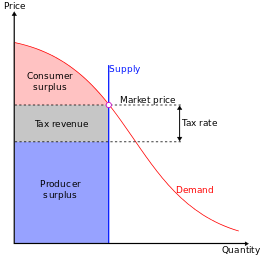Center for Property Tax Reform
SHIFTS IN PROPERTY AND LAND TAX IN CHARLOTTESVILLE, VA
JUNE 14, 2021/BY MICHAEL WARD
LAND VALUE TAX, PROPERTY TAX, REAL ESTATE
The Center for Property Tax Reform (CPTR) is excited to announce the newest addition to the Tax Shift Explorer: the city of Charlottesville, VA. Population-wise, Charlottesville is one of the smaller cities to be mapped on Tax Shift Explorer to date. The city has a population of 91,076 and property tax revenue of roughly $100 million across 16,000 parcels. Charlottesville currently derives 33% of its total property tax revenue from land value, with the other 77% coming from building/improvement value.
One of the intentions of a split rate Land Value Tax model is to see higher progressivity in property taxes for residential properties. For example, property taxes should increase in areas with higher median income and decrease in areas with lower median income. At first glance, it appears that a split rate Land Value Tax model could have regressive effects on residential properties in Charlottesville.
Before comparing neighborhoods, it is necessary to consider the total demographics for Charlottesville. The median household income is $66,473, with a population that is 66% White, 19% Black/African American, 5% Hispanic, and 7% Asian.
In Charlottesville, the Barracks / Rugby neighborhood has the highest median household income at $122,875, and a median residential tax bill of $4,151. This neighborhood is also a larger majority white than the whole of Charlottesville, 72% compared to 66%. In comparison, the Rose Hill neighborhood has a median household income of $43,397, and a median residential tax bill of $1,565. This neighborhood has one of the highest minority populations in Charlottesville, with a 49% African American and 12% Asian population.
With a shift to 100% revenue generated from land tax, the two aforementioned neighborhoods would experience different tax shifts. The Barracks / Rugby neighborhood would see an 18% decrease in their median tax bill, from $4,151 to $3,412. The Rose Hill neighborhood would see a 37% increase in their median tax bill from $1,565 to $2,140 if the percent revenue from land tax was shifted to 100% from the current 33%. These figures suggest that increasing revenue from land tax would increase the regressivity of property taxes in Charlottesville. More analysis may need to be applied to confirm this suggestion.
Another variable to take into account when considering residential tax changes is the difference in property ownership rates between Barracks / Rugby and Rose Hill. In the Barracks / Rugby neighborhood, 61% of households are owner occupied and 36% of households are renter occupied. The ownership rates in Barracks / Rugby are almost the exact inverse of the ownership rates in Rose Hill, which sees 33% of households occupied by owners and 66% of households occupied by renters.
Two categories where Charlottesville would see the largest percentage increase in tax revenue from enacting 100% LVT would be from vacant parcels and parcels with non-taxable buildings. Shifting from a 33% to 100% LVT would increase tax revenue from roughly 1.9 million to 5.7 million dollars for vacant parcels, and from 500k to 1.5 million dollars for parcels with non-taxable buildings. Overall, vacant parcels account for 5.8% of the total taxable land value in Charlottesville, VA.
In summary, Charlottesville would see a 13% decrease in revenue from residential properties with 100% LVT enacted, with more revenue coming in from commercial properties (+53%), industrial properties (+20%), vacant properties (+195%) and non-taxed buildings (+198%). Charlottesville’s overall tax revenue would remain neutral regardless of the breakdown between LVT and building/improvement tax.
To explore more about how a shift in Land Value Tax might affect Charlottesville, VA, try out the Center for Property Tax Reform’s mapping tool. For data questions or suggestions on cities you would like to see added to the Tax Shift Explorer, email Michael Ward at [email protected].
____________________________________
Comment:
The Center for Property Tax Reform, based in Princeton, New Jersey, offers upon request technical advice on implementing LVT in local jurisdictions. It has recently developed the Tax Shift Explorer, a tool that simulates the application of a split tax rate on property valuations, using a data base from county assessors. This is helpful to local council members and state legislators who are considering changes in the law that authorize the use of LVT.
Common Ground – ORWA has conducted similar tax incident simulation models in Oregon and Washington. An LVT Study Bill is again being proposed in the 2023 Oregon legislative session. This can likewise help state legislators understand how a local option land tax will work in their districts.



